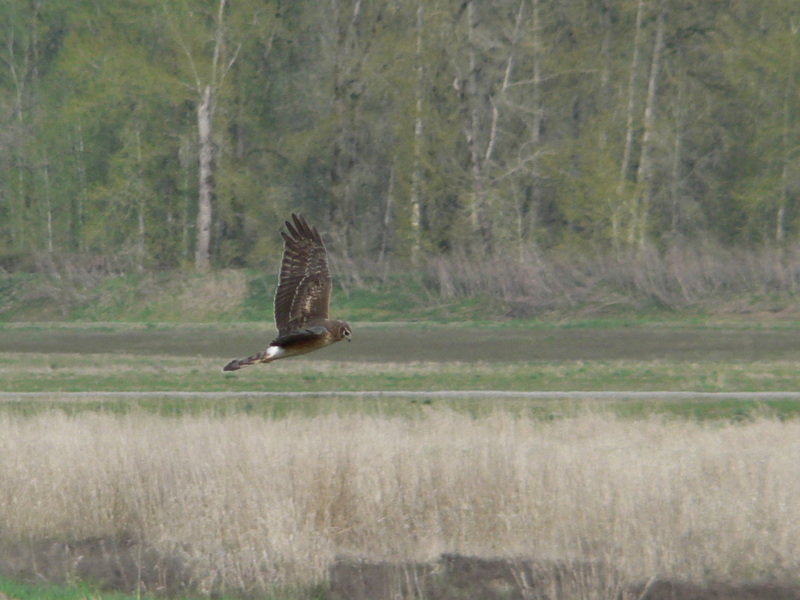|
| 질의: description | 결과: 9535번째/10150 | |
Northern Harrier, Hen Harrier (Circus cyaneus) - Wiki
| 제목: | Northern Harrier, Hen Harrier (Circus cyaneus) - Wiki
| |

| 해상도: 1232x924
파일크기: 276313 Bytes
등록시간: 2007:12:07 13:10:21
|
Hen Harrier
From Wikipedia, the free encyclopedia
Order: Falconiformes
Family: Accipitridae
Subfamily: Circinae
[Photo] Hen Harrier (Circus cyaneus). Adult female, American subspecies. Location: Auto tour route, River "S" unit, Ridgefield National Wildlife Refuge. ??2006 Walter Siegmund. Date 2006:04:06. Author Walter Siegmund (http://en.wikipedia.org/wiki/User_talk:Wsiegmund). Copyright (C) 2006 Walter Siegmund
Permission is granted to copy, distribute and/or modify this document under the terms of the GNU Free Documentation License, Version 1.2 or any later version published by the Free Software Foundation; with no Invariant Sections, no Front-Cover Texts, and no Back-Cover Texts. A copy of the license is included in the section entitled "GNU Free Documentation License". |
The Hen Harrier (Circus cyaneus) or Northern Harrier (in North America) is a bird of prey. It breeds throughout the northern parts of the northern hemisphere in Canada and the northernmost USA, and in northern Eurasia. This species is polytypic, with two subspecies. Marsh Hawk is a disused name for the American form.
It migrates to more southerly areas in winter. Eurasian birds move to southern Europe and southern temperate Asia, and American breeders to the southernmost USA, Mexico and Central America. In the mildest regions such as France, Great Britain and the southern US, Hen Harriers may be present all year, but the higher ground is largely deserted in winter.
Description
The Hen Harrier is 45-55 cm long with a 97-118 cm wingspan. It resembles other harriers in having distinct male and female plumages. The sexes also differ in weight, with males weighing an average of 350 g and females an average of 530 g.
The male of the nominate race, Circus cyaneus cyaneus (Linnaeus, 1766), breeds in Europe and Asia, is mainly grey above and white below except for the upper breast, which is grey like the upperparts, and the rump, which is white; the wings are grey with black wingtips. The female is brown above with white upper tail coverts, hence females, and the similar juveniles, are often called "ringtails". Their underparts are buff streaked with brown.
Circus cyaneus hudsonius (Linnaeus, 1766), the Northern Harrier, breeds in North America and is sometimes considered a distinct species Circus hudsonius. The male's plumage is darker grey than that of Circus cyaneus cyaneus and the female is also darker and more rufous in colour.
The female gives a whistled piih-eh when receiving food from the male, and her alarm call is chit-it-it-it-it-et-it. The male calls chek-chek-chek, with a more bouncing chuk-uk-uk-uk during his display flight
Behaviour
This medium-sized raptor breeds on moorland, bogs and (in Europe) farmland. The nest is on the ground. Four to six whitish eggs are laid.
In winter, the Hen Harrier is a bird of open country, and will then roost communally, often with Merlins. There is now an accepted record of transatlantic vagrancy by the American subspecies, with a juvenile being recorded in Scilly, Great Britain from October 1982 to June 1983.
This is a typical harrier, with long wings held in a shallow V in its low, contour-hugging, flight. Hen Harriers hunt small mammals and birds, surprising them as they drift low over fields and moors.
Status
This species has a large range, with an estimated global extent 1???10 million km², and a population estimated at 1.3 million individuals. There is evidence of a population decline, but the species is not believed to approach the thresholds for the population decline criterion of the IUCN Red List (i.e., declining more than 30% in ten years or three generations). It is therefore evaluated as "least concern".
Problems in the United Kingdom
In the UK, the Hen Harrier suffers illegal persecution by gamekeepers and their employers on shooting estates, particularly those managed for Red Grouse shooting, resulting in local and regional extinction in many areas, particularly in England where only 20 pairs survive despite abundant suitable habitat capable of holding several hundred pairs. Because of this they are now very rare and in danger of extinction in the UK.
This problem received a high profile in October 2007 when police investigating the killing of two Hen Harriers on the Queen's estate at Sandringham in Norfolk interviewed Prince Harry and a friend during their investigation. No charges were brought as police were unable obtain sufficient evidence to prosecute.
Since the assumed threat to Red Grouse is the main reason for the persecution of this species in the UK, a project funded by Scottish Natural Heritage, the Game & Wildlife Conservation Trust, the RSPB and Natural England was launched at Langholm Moor in Scotland from 2007. The Langholm Moor Demonstration Project (LMDP), a 10-year investigation, costing ??3 million, is intended to see whether grouse and raptors can live side-by-side harmoniously.
A similar project, the Joint Raptor Study was run on Langholm in the 1990s, and produced some evidence that the two species are unable to flourish simultaneously; at the end of the Joint Raptor Study in 1997, grouse shooting on the moor was abandoned.
http://en.wikipedia.org/wiki/Hen_Harrier
| The text in this page is based on the copyrighted Wikipedia article shown in above URL. It is used under the GNU Free Documentation License. You may redistribute it, verbatim or modified, providing that you comply with the terms of the GFDL. |
|
^o^
동물그림창고 똑똑전화 누리집
^o^
|
|